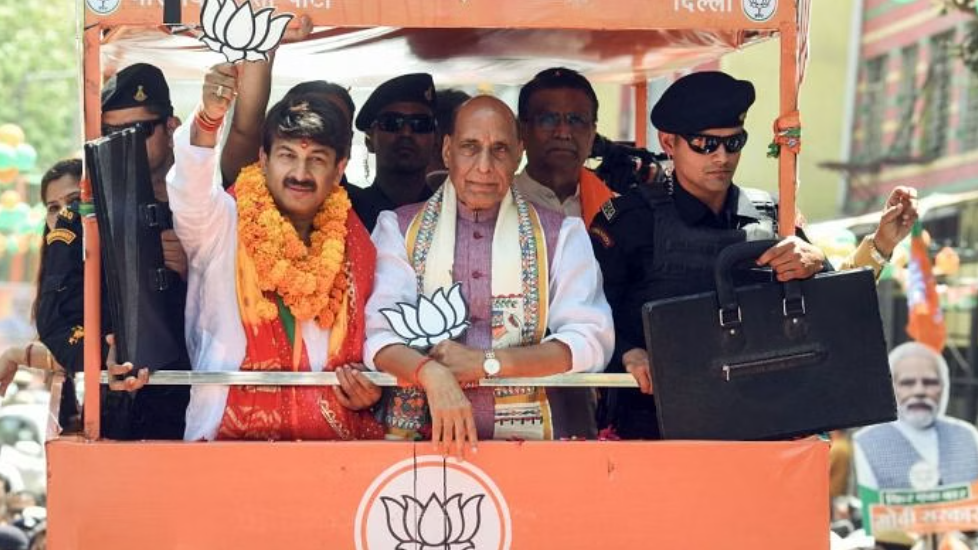Phase 6—gains and losses for BJP in east, setback in Haryana & Delhi
https://theprint.in/
India
25-05-2024
Share

The Congress appears set to snatch more than half the seats in Haryana. It could even be a reverse sweep this time.
As the Lok Sabha election turns towards north west India in its final stages, the BJP’s worries are set to get bigger, especially in the three PHD States—Punjab, Haryana and Delhi. While Punjab will vote in the last round a week from now, the penultimate phase will see 10 seats of Haryana and seven seats of Delhi going to polls. Voting will also take place in 40 seats spread across eastern India comprising the Poorvanchal region of Uttar Pradesh and parts of Bihar, Jharkhand, West Bengal and Odisha. The Anantnag-Rajouri seat of Jammu & Kashmir, which was set to vote in the third phase, also goes to the polls.
Of the 58 seats that go to polls in the sixth phase, the BJP had won as many as 40 in the 2019 Lok Sabha election and its NDA allies another five. The Congress, on the other hand, could not win a single seat five years ago, while other INDIA constituents won five. Bahujan Samaj Party and Biju Janata Dal won four each. The subsequent Assembly elections somewhat balanced the equation—INDIA alliance parties led in 22 seats. Although this calculation need not hold in the Parliamentary elections, ground reports suggest that BJP faces headwinds everywhere except Bengal and Odisha.
Haryana and Delhi are in the midst of a blistering heat wave and could possibly be on the verge of an electoral wave as well. On paper, Haryana looks like a safe bastion for the BJP. The party swept all 10 seats, mostly by huge margins, in 2019 and led in eight seats in the subsequent Assembly elections. But many factors have suddenly come together to turn the tide. The farmers’ movement prepared the ground to give expression to latent unease with the ruling dispensation. It induced the dominant peasant community to shift to the Congress.
The BJP’s hopes rested on a Jat/non-Jat divide that does not seem to have materialised, thanks to widespread unease on livelihood issues such as price rise, unemployment and intense disapproval of the Agniveer scheme. Besides, the Congress has carefully balanced the social profile of its candidates by giving only two seats to Jat candidates and thus blunted possible polarisation.
Changing the CM on the eve of Lok Sabha polls has not worked. It has left the state government tottering with prominent leaders deserting the BJP. What adds to Congress’s advantage is that the Indian National Lok Dal (INLD) and Jannayak Janta Party (JJP), the two Jat-Centric parties representing the third pole of Haryana politics, have been pushed to the margins this time. The Congress appears set to snatch more than half the seats. It could even be a reverse sweep this time.
Another upset awaits the BJP in neighbouring Delhi where the ruling Aam Aadmi Party and the Opposition Congress have buried their differences for the time being and are, for the first time, jointly fighting the elections against their common foe, the BJP, with a four-three seat arrangement. While the BJP won all seven seats in the 2019 Lok Sabha elections with staggering margins, the AAP had reversed the lead everywhere in the Assembly polls.
Going by the results of the last Parliamentary election, the alliance between AAP and Congress may not be enough to take on the BJP. But, both the parties have had a similar support base—working class, Dalit and Muslim—that makes vote transfer between them easy even without the requisite effort by the respective organisations. Besides, the arrest of Arvind Kejriwal has brought him, rather than Modi to the centre stage, notwithstanding the recent and damaging controversies. The BJP has had to contend with dissatisfaction with its MPs and replace six of its seven sitting MPs.